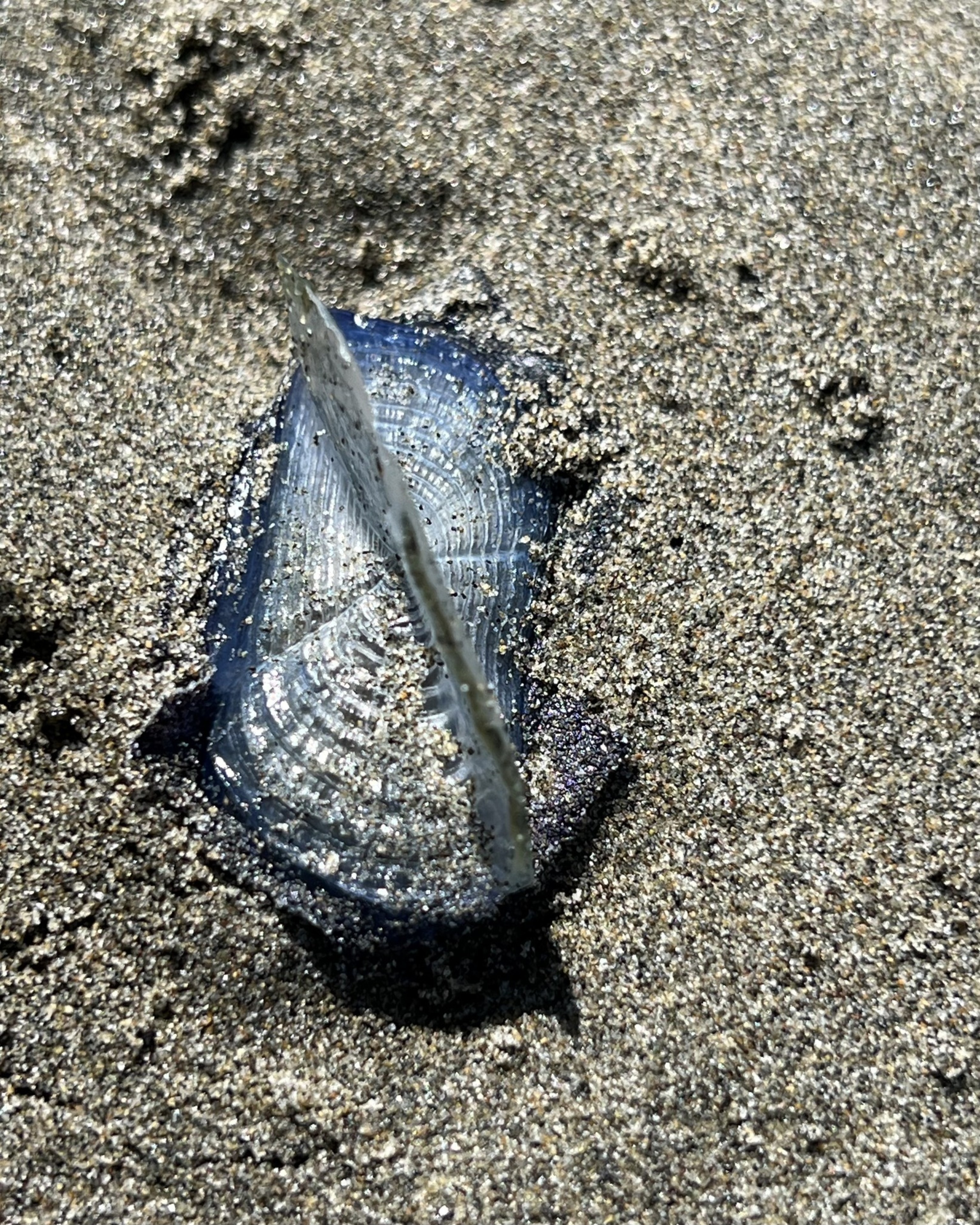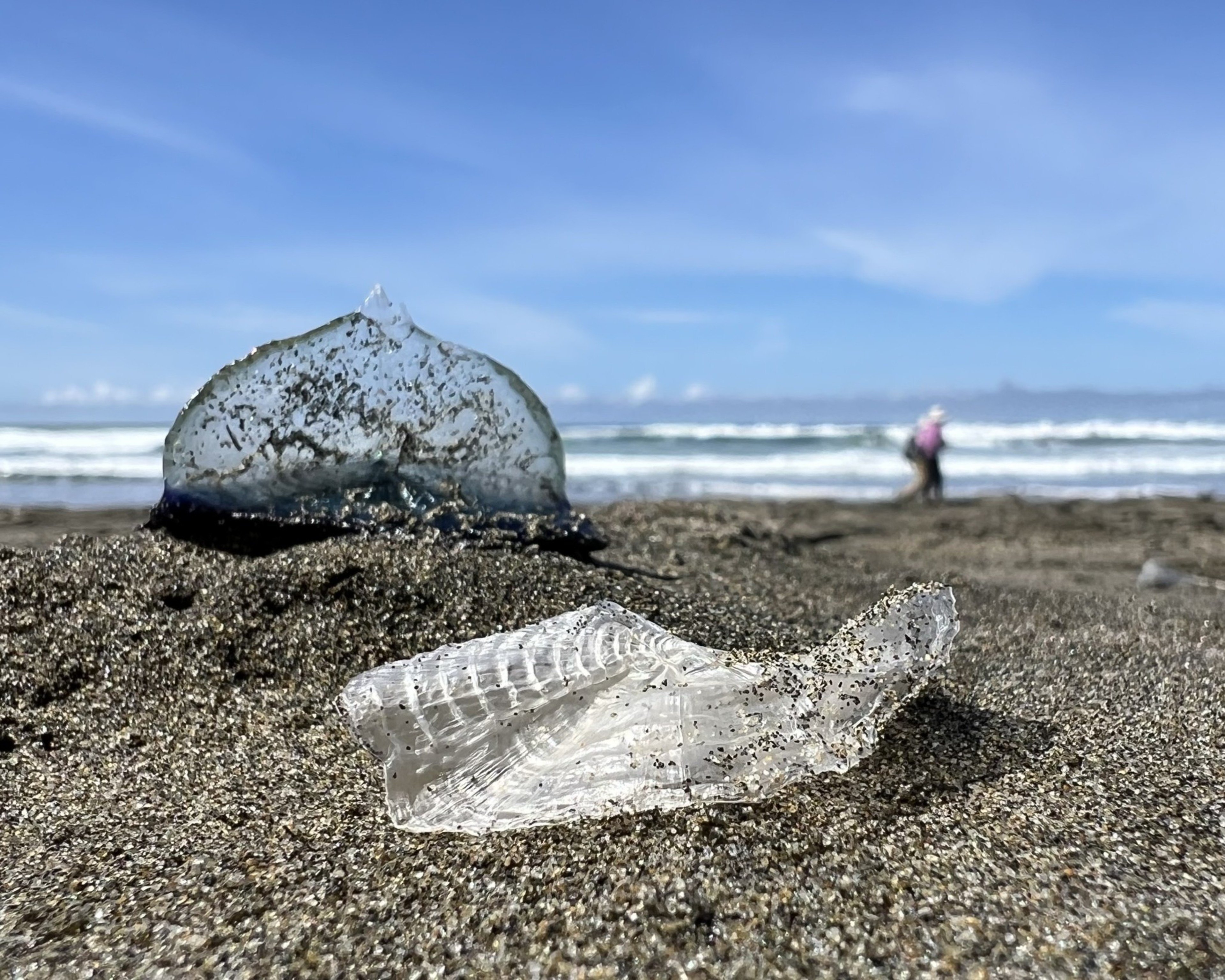If you don’t watch where you’re stepping on Ocean Beach, you might miss them. These alien-looking tiny blue jellies with sails have been washing ashore in San Francisco by the hundreds over the last few days.
Known as by-the-wind sailors, or Velella velella, the relatives of jellyfish truly are at the mercy of the wind, which pushes them along the ocean surface as they scoop up their microscopic diet of marine larvae and eggs, sometimes even tiny crustaceans.
Each animal can grow up to 2 or 3 inches long, with a thin translucent sail rising up and stretching the length of its body and small tentacles hanging underneath.

Though it doesn’t happen every year due to varying wind and ocean patterns, it’s not uncommon for their blue, gelatinous bodies to pile up somewhere along the California coast, from Point Reyes to Orange County. This week, they’ve been washing up on San Francisco’s Ocean Beach since at least Tuesday, when a Reddit user posted images of some (opens in new tab).
Among crab shells, feathers and other ocean detritus, swaths of them marked the high-tide line on Thursday, many of the bodies now dried and translucent, devoid of their blue coloring. Two surfers coming out of the water said they had seen masses of the jellies being carried toward shore by the waves earlier in the week.
Out on the open ocean, by-the-wind sailors amass in huge blooms, sometimes up to trillions at a time, according to Chrissy Piotrowski, senior collections manager of invertebrate zoology at the California Academy of Sciences. But right now, like most springs, the prevailing Pacific winds are blowing onshore, splashing waves of them onto California beaches. Though that usually happens around April, “it’s not that crazy that we’re seeing them a little bit early this year,” Piotrowski said, and it wouldn’t be surprising for more to come.
Unlike mass die-offs of fish or other sea life that get washed ashore, there’s no reason to worry about the overall well-being of V. velella. In fact, Piotrowski said, the jellies are hard to study because they are pelagic animals living far offshore, so when hundreds of thousands of them wash up, it’s a helpful sign to scientists that the population is probably doing fine—since only a fraction of the overall population gets swept onshore.

And there’s no doubt that the strange sight of the little jellies can captivate and confound beachgoers.
“It’s interesting when it happens in a major metropolis because I think it’s actually nice that it engages people with looking around them and noticing the natural world and seeing something weird that they haven’t seen before,” Piotrowski said. “Many people are not familiar with invertebrates, especially weird-looking invertebrates like these floating things with sails.”
By-the-wind sailors are peculiar for more than their appearance; each animal is not really an individual organism but a colony.
“They’re floating colonies of carnivorous polyps,” Piotrowski said. “So they’re actually not jellyfish, but they’re related to jellyfish. They’re in a class of organisms called the hydrozoans, which are cousins of corals and anemones and jellyfish.”

Those floating colonies are the animal’s asexual phase, according to Piotrowski. When the colony is ready to reproduce, it sprouts tiny jellyfish-like buds called medusae, which sink to deeper water and produce larvae that then float back to the surface and become the colonies that are by-the-wind sailors. As they float across the ocean, there have even been scientific reports of Dungeness crab larvae hitching a ride under the masses of V. velella, feeding on the tentacles and enjoying the protection of their jellyfish-like stinging cells.
Those stinging cells are too weak to pierce human skin, so they pose little risk to people or their pets walking on the beach.
“That said, I wouldn’t recommend picking them up because they can irritate the skin of some people,” Piotrowski said. “And generally, it’s just not a good idea to handle wildlife. It’s best to just leave things where they are and, you know, let things eat it. Let what’s naturally supposed to happen happen.”
